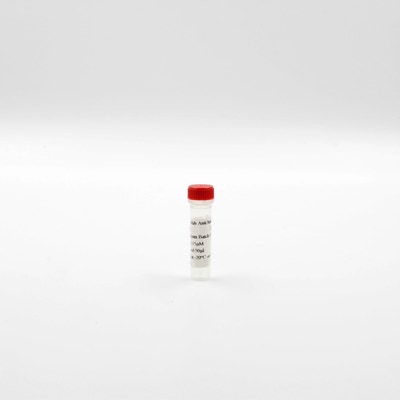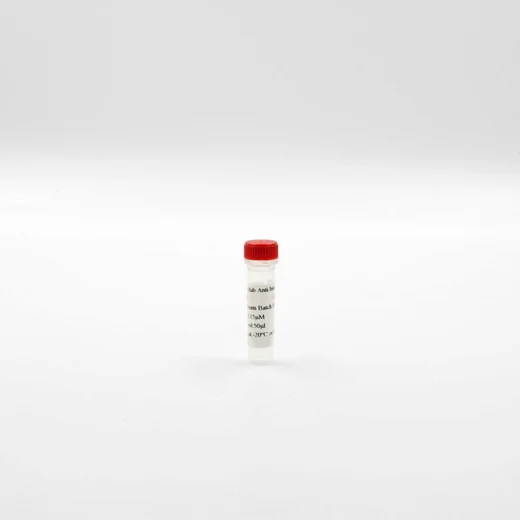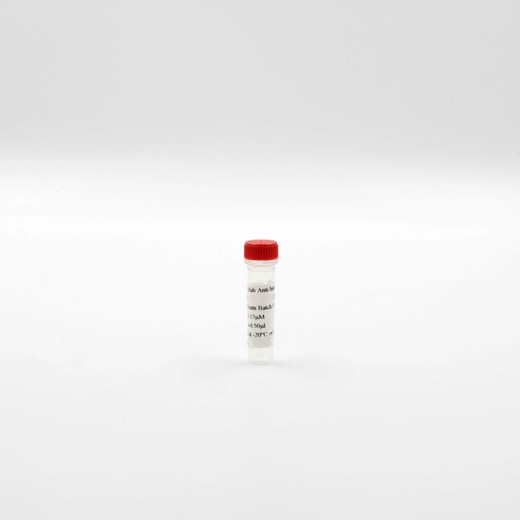

HTRF Anti histone H3K36 Me1-EuK mAb conjugate, 500 Assay Points


HTRF Anti histone H3K36 Me1-EuK mAb conjugate, 500 Assay Points






This Eu-cryptate conjugate allows specific detection of the K36Me1 motif on histone H3, as a result of methylation or demethylation enzymatic activity.
For research use only. Not for use in diagnostic procedures.
| Feature | Specification |
|---|---|
| Application | Biochemical Enzymatic Assay |
This Eu-cryptate conjugate allows specific detection of the K36Me1 motif on histone H3, as a result of methylation or demethylation enzymatic activity.



HTRF Anti histone H3K36 Me1-EuK mAb conjugate, 500 Assay Points



HTRF Anti histone H3K36 Me1-EuK mAb conjugate, 500 Assay Points



Product information
Overview
Revvity offers a line of ready to use HTRF toolbox reagents for the construction of Histone H3 methyltransferase (HMT), demethylase (HDM) and deacetylase (HDAC) activity assays. This monoclonal antibody Eu-cryptate conjugate is specific for the histone H3K36Me1 methylation mark. It can be used for the development of biochemical assays with the highest levels of specificity and sensitivity, for the screening and study of both HMTs and HDMs, such as JHDM1A.
Specifications
| Application |
Biochemical Enzymatic Assay
|
|---|---|
| Brand |
HTRF
|
| Detection Modality |
HTRF
|
| Molecular Modification |
Methylation
|
| Product Group |
Fluorescent Reagent
|
| Shipping Conditions |
Shipped in Dry Ice
|
| Target Class |
Epigenetics
|
| Technology |
TR-FRET
|
| Therapeutic Area |
Metabolism/Diabetes
Neuroscience
Oncology & Inflammation
|
| Unit Size |
500 Assay Points
|
Video gallery

HTRF Anti histone H3K36 Me1-EuK mAb conjugate, 500 Assay Points

HTRF Anti histone H3K36 Me1-EuK mAb conjugate, 500 Assay Points

How it works
Assay principle
Revvity’s HTRF-based reagents give researchers the flexibility to create highly specific, custom histone modification assays for enzymes such as HMTs, DMTs or HDACs. All these assays use a biotinylated histone H3 peptide substrate, a Eu-cryptate labeled detection antibody and XL665-conjugated Streptavidin. Assay specificity is derived from the combination of the chosen Eu-cryptate labeled anti-histone antibody together with the biotinylated peptide substrate. HTRF signal is proportional to the concentration of methyl-specific peptide (e.g. unmethylated, mono-, di- or tri-methylated peptide).

Assay protocol
Two step assays are performed in a single well, require no wash steps and can easily be miniaturized to a 384-well format. The enzymatic reaction containing the biotinylated peptide, enzyme, co-factors and compounds is followed by the detection step in which Eu-labeled anti-methylated histone H3 antibody and SA-XL665 are added. The HTRF signal is detected following a brief room temperature incubation, and is stable for multiple readouts.

Assay details
Anti-histone H3 Eu-cryptate conjugates
|
Methylation level |
K4 |
K9 |
K27 |
k36 |
|---|---|---|---|---|
|
Me0 |
V |
V |
|
|
|
Me1 |
V |
V |
V |
V |
|
Me2 |
V |
V |
V |
V |
|
Me2 |
V |
|
V |
|
Antibody specificity
Each Eu-cryptate labeled anti-histone antibody recognizes a single histone H3 lysine residue and methylation level. Revvity has performed cross-reactivity studies against alternative peptides and methylation levels for each antibody to ensure specificity.
| PeptideMAb | H3K4 | H3K9 | H3K27 | H3K36 | ||||||||
|---|---|---|---|---|---|---|---|---|---|---|---|---|
| me0 | me1 | me2 | me3 | me0 | me1 | me2 | me1 | me2 | me3 | me1 | me2 | |
| H3(1-21) | 100% | 1.3% | 0% | 0% | 100% | 0.7% | 0% | - | - | 0% | - | - |
| H3(21-44) | 0% | - | - | 0% | - | - | 0% | 0% | 0% | 0% | 4.4% | 0% |
| H3(1-21) K4Ac | 0% | - | - | - | - | - | - | - | - | - | - | - |
| H3(1-21) K9Ac | - | - | - | - | 0.1% | - | - | - | - | - | - | - |
| H3(1-21) K4me1 | 0% | 100% | 0.6% | 0.5% | - | - | 0% | - | - | 0% | - | - |
| H3(1-21) K4me2 | 0% | 15% | 100% | 7.4% | - | - | 0% | - | - | 0% | - | - |
| H3(1-21) K4me3 | 0% | 0.4% | 0% | 100% | - | - | 0% | - | - | 0% | - | - |
| H3(1-21) K9me1 | - | - | - | 0% | 0.4% | 100% | 0.1% | - | - | 0% | - | - |
| H3(1-21) K9me2 | - | - | - | 0% | 0.3% | 0% | 100% | - | - | 0% | - | - |
| H3(1-21) K9me3 | - | - | - | 0.2% | 0.1% | 0% | 0.1% | - | - | 0.2% | - | - |
| H3(21-44) K27me1 | - | - | - | 0% | - | - | 0.1% | 100% | 1.5% | 0.2% | - | 0% |
| H3(21-44) K27me2 | - | - | - | 0.2% | - | - | 0% | 1.4% | 100% | 3.3% | - | 0.1% |
| H3(21-44) K27me3 | - | - | - | 0% | - | - | 0.1% | 0% | 0% | 100% | - | 0% |
| H3(21-44) K36me1 | - | - | - | 0% | - | - | 0.1% | - | - | 0% | 100% | 0.7% |
| H3(21-44) K36me2 | - | - | - | 0% | - | - | 0.1% | - | - | 0.1% | 0.60% | 100% |
| H3(21-44) K36me3 | - | - | - | 0.1% | - | - | 0.1% | - | - | 0.4% | 0% | 0% |
Assay validation
Validation of enzymatic assays
Revvity has developed a number of HTRF assays for HMT/HDM/HDAC enzymes using the antibody conjugate epigenetic panel. The table below recaps the assay set up for H3K36 position, and provides in each case a technical note including materials and methods as well as the results obtained.
| Enzyme | Type | Methylation level | Biotinylated substrate | Eu3+-Cryptate MAb | |
|---|---|---|---|---|---|
| JHDM1A | Demethylase | K36 me2 →me1 | H3(21-44)K36me2 | H3K36me1 | |
| JMJD2A | Demethylase | K36 me3 →me2 | H3(21-44)K36me3 | H3K36me2 |
Resources
Are you looking for resources, click on the resource type to explore further.
Discover the versatility and precision of Homogeneous Time-Resolved Fluorescence (HTRF) technology. Our HTRF portfolio offers a...
SDS, COAs, Manuals and more
Are you looking for technical documents related to the product? We have categorized them in dedicated sections below. Explore now.
-
LanguageEnglishCountryUnited States
-
LanguageFrenchCountryFrance
-
LanguageGermanCountryGermany
-
LanguageGreekCountryGreece
-
LanguageItalianCountryItaly
-
LanguageSpanishCountrySpain
-
LanguageEnglishCountryUnited Kingdom
-
Lot number03BLot dateJune 12, 2026
-
Lot number03RALot dateJune 12, 2026
-
Lot number05ALot dateMarch 9, 2026
-
Lot number04ALot dateJanuary 14, 2026
-
Lot number02Lot dateMay 28, 2025
-
Lot number02RALot dateMay 28, 2025
-
Lot number03RALot dateJune 12, 2024
-
Lot number003Lot dateJune 12, 2024
-
Lot number03BLot dateJune 12, 2024
-
Resource typeManualLanguageEnglishCountry-


How can we help you?
We are here to answer your questions.






























